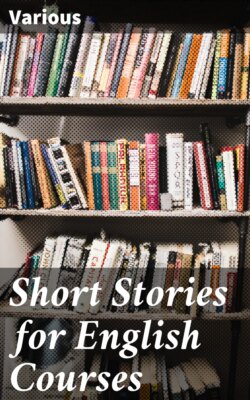Читать книгу Short Stories for English Courses - Various - Страница 6
На сайте Литреса книга снята с продажи.
HOW THIS BOOK MAY BE USED
ОглавлениеTable of Contents
This book may be used in four ways. First, it may serve as an appetizer. Even the casual reading of good literature has a tendency to create a demand for more. Second, it may be made the basis for discussion and comparison. By using these stories, the works of recognized authors, as standards, the student may determine the value of such stories as come into his home. Third, these selections may be studied in a regular short-story course, such as many high schools have, to illustrate the requirements and the types of this form of narration. The chapter on "The Requirements of the Short Story" will be found useful both in this connection and in the comparative study of stories. Fourth, the student will better appreciate and understand the short story if he attempts to tell or to write one. This does not mean that we intend to train him for the literary market. Our object is entirely different. No form of literature brings more real joy to the child than the story. Not only does he like to hear stories; he likes to tell them. And where the short-story course is rightly used, he likes to write them. He finds that the pleasure of exercising creative power more than offsets the drudgery inevitable in composition. A plan that has been satisfactorily carried out in the classroom is here briefly outlined.
The teacher reads with the class a story in which plot furnishes the main interest. This type is chosen because it is more easily analyzed by beginners. The class discusses this, applying the tests of the short story given elsewhere in this book. Then a number of short stories of different types are read and compared. Next, each member of the class selects from some recent book or magazine a short story he enjoys. This he outlines and reports to the class. If this report is not satisfactory, the class insists that either the author or the reporter be exonerated. The story is accordingly read to the class, or is read and reported on by another member. The class is then usually able to decide whether the story is faulty or the first report inadequate.
Next the class gives orally incidents that might or might not be expanded into short stories. The students soon discover that some of these require the lengthy treatment of a novel, that others are good as simple incidents but nothing more, and that still others might develop into satisfactory short stories. The class is now asked to develop original plots. Since plots cannot be produced on demand, but require time for the mind to act subconsciously, the class practises, during the "period of incubation," the writing of dialogue. For these the teacher suggests a list of topics, although any student is free to substitute one of his own. Among the topics that have been used are: "Johnny goes with his mother to church for the first time," "Mrs. Hennessy is annoyed by the chickens of Mrs. Jones," "Albert applies for a summer job." Sometimes the teacher relates an incident, and has the class reproduce it in dialogue. By comparing their work with dialogue by recognized writers the youthful authors soon learn how to punctuate and paragraph conversation, and where to place necessary comment and explanation. They also discover that dialogue must either reveal character or advance the story; and that it must be in keeping with the theme and maintain the tone used at the beginning. A commonplace dialogue must not suddenly become romantic in tone, and dialect must not lapse into ordinary English.
